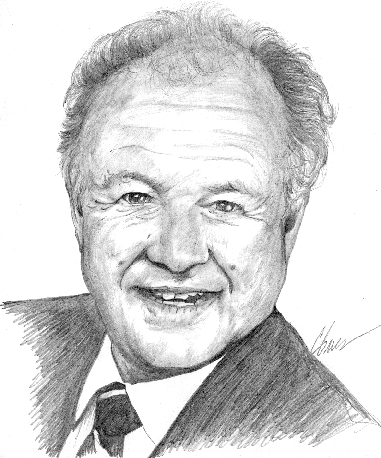INTERVIEW
by Thom Hartle

ILLUSTRATION BY CARL GREEN
Technical analysis is based on the realistic assumption that people are motivated by their emotions, as well as accounting for the group influence at work. -- Henry Pruden
How did you first become interested in technical analysis?
In 1974, while I was teaching at the University of Texas at Austin, I invested in the stock market. Unfortunately, I lost more money in my portfolio that year than I was earning. So I looked into the study of securities and realized something: My colleagues from the school of finance were lost. They were relying on an economic model that had long been discredited; the market had outgrown it. When I started looking around for methodology with which to analyze the market, I gravitated to technical analysis.
Why?
Because technical analysis is based on the realistic assumption that people are motivated by their emotions, as well as accounting for the group influence at work. That's how I originally became interested in technical analysis. Later, I left full-time academia and moved out to San Francisco, but in the back of my mind, I still liked teaching -- but I didn't want just to teach marketing, which is what I had been doing.
You wanted to teach technical analysis by that point?
Yes. I wanted to be able to preach what I practice and vice versa. That's a great combination, because teaching a subject really causes a person to focus, to be disciplined and to master it. In addition, practice enables you to develop better insights into what you teach. So practicing what I preach has long been my philosophy.
Tell us about Golden Gate University.
Golden Gate gave me the opportunity to launch what I believe was the first-ever accredited college graduate course in technical analysis. The university's attitude was a refreshing one. The dean at that time felt that we had really bright people who came from the Montgomery Street financial district in San Francisco to study and brush up on their financial knowledge. He knew that they were not going to waste their time or money on a course that wasn't worth it. So our logic was that if we could put a good course together, they'd come back to the university.
So it was put to you as sort of a challenge?
That's right. So I started by teaching a one-semester course in the fall of 1976, and that launched the technical analysis curriculum at Golden Gate University. The circumstances were excellent, because not only was the university supportive, there were only two organizations focused on technical analysis in the US at that time, and one was in San Francisco.
The other, I assume, is the Market Technicians Association, which began in New York.
That's right. The Technical Securities Analysts Association of San Francisco (TSAASF) and the Market Technicians Association (MTA) were founded in the same year [1970], almost at the same time, independently of each other.
That was a banner year!
It was! So there was a thriving technical society here in San Francisco. I was able to have that professional link, and that helped my teaching, my trading and my affiliations. That was a big reason why technical analysis education ended up being as successful as it turned out to be in San Francisco. Out of the TSAASF came students and, ultimately, other instructors who taught part-time. So as the curriculum grew, I was able to bring in others who were technical practitioners and could also teach technical analysis. Many have gone on to become leaders in the field of technical analysis.
"There is something about technical analysis that tends to cause people to underestimate how much skill is really needed to use these methods successfully."Excerpted from an article originally published in the September 1998 issue of Technical Analysis of STOCKS & COMMODITIES magazine. All rights reserved. © Copyright 1998, Technical Analysis, Inc.